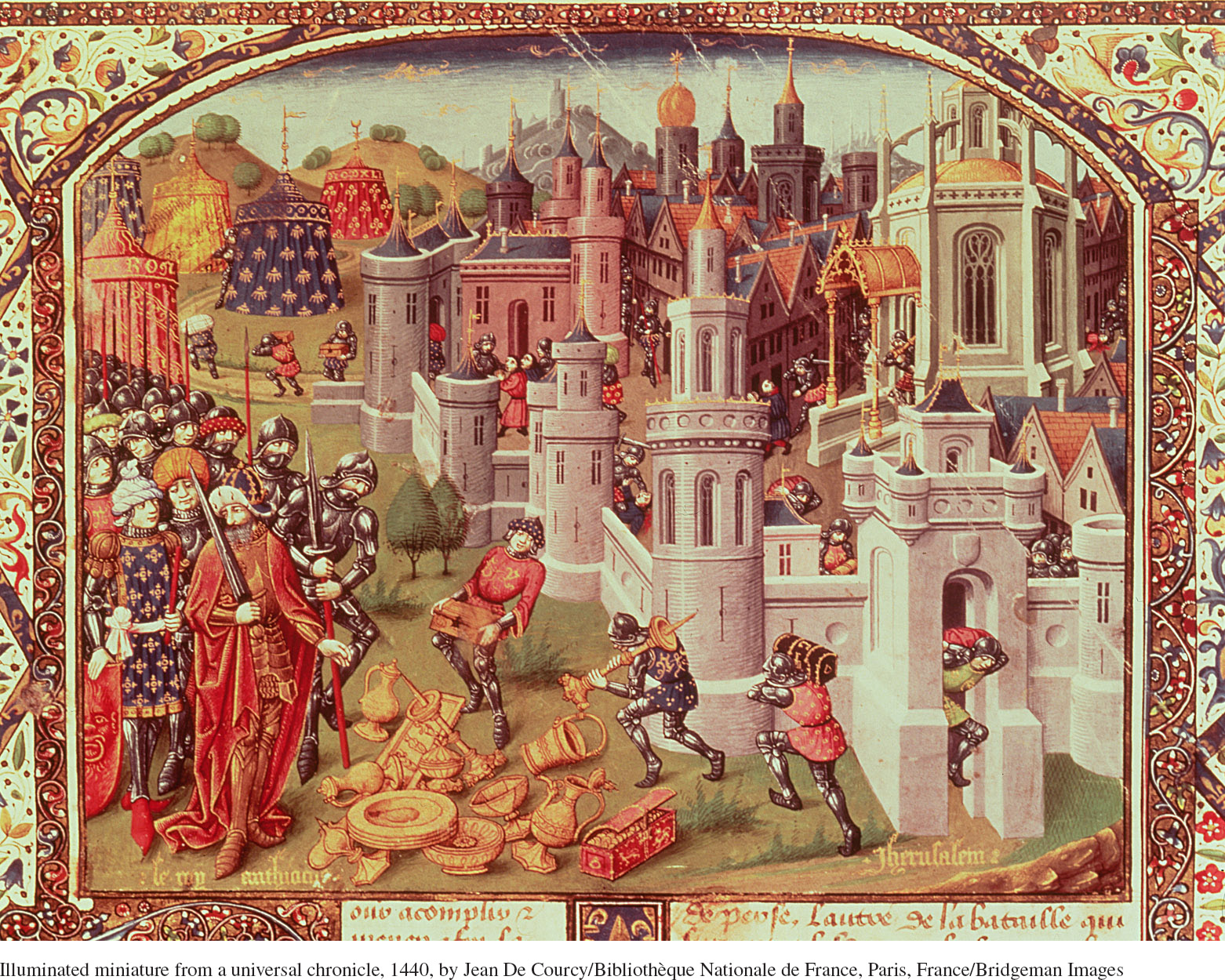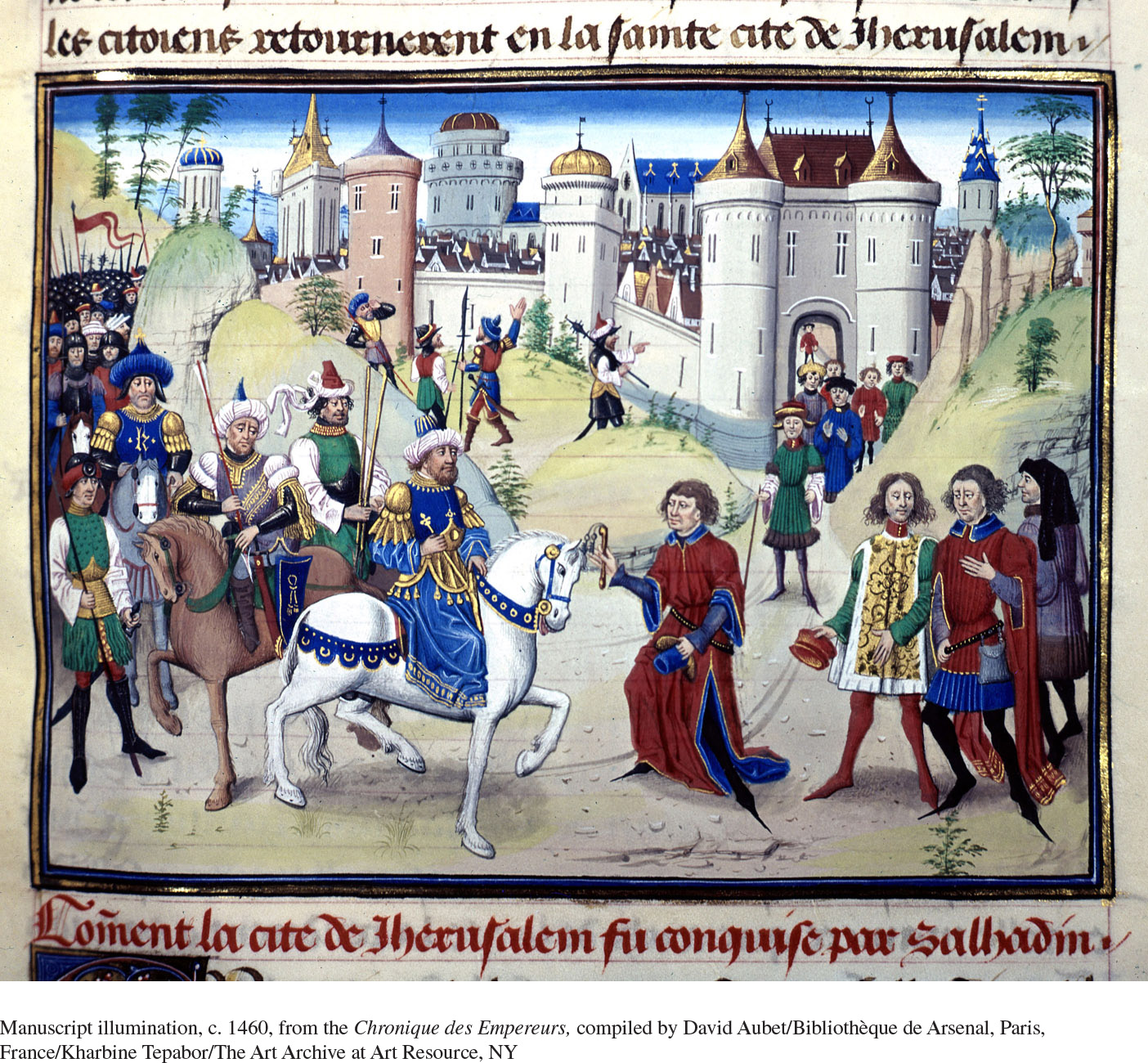Source 10.4
Jerusalem and the Crusades
As a city sacred to Christians, Jews, and Muslims alike, Jerusalem lay at the epicenter of the Crusades. Two images of the city, both painted by European artists in the fifteenth century to adorn richly decorated books, portray two decisive events of the Crusades. The first shows the Christian seizure of Jerusalem in 1099, while the second records Saladin’s retaking of the city in 1187. While the subject matter of the two images is historical, the depictions of Jerusalem are fanciful, incorporating Western European architectural features such as European fortifications and houses. Painted centuries after the event, these images provide evidence of how Europeans perceived the Crusades after their conclusion.
Questions to consider as you examine the source:
- What is happening in each of the paintings?
- Saladin is that rare Muslim figure who achieved a heroic stature in both the Christian and Islamic worlds. Why might the artist who painted the image in Source 10.4B have portrayed Saladin in such a positive light?
- To what extent do these paintings illustrate al-
Athir’s account of these two events? - Based on Urban II’s speech in Source 10.1, would he have been pleased with or appalled at the behavior shown in Source 10.4A?
Source 10.4A
The Looting of Jerusalem, 1099

Source 10.4B
How Jerusalem Was Captured by Saladin, 1187
